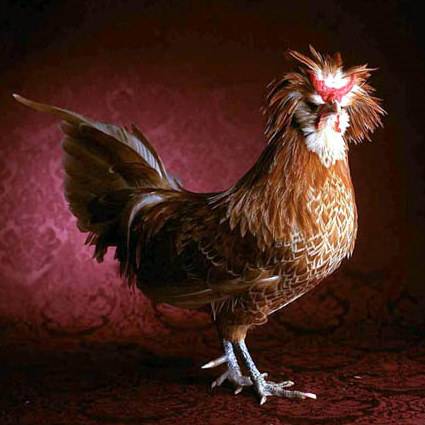|
|
Chickens And Roosters
|
Hens will try to lay in nests that already contain eggs, and have been known to move eggs from neighboring nests into their own. Some farmers use fake eggs made from plastic or stone (or golf balls) to encourage hens to lay in a particular location. The result of this behavior is that a flock will use only a few preferred locations, rather than having a different nest for every bird.
Hens can also be extremely stubborn about always laying in the same location. It is not unknown for two (or more) hens to try to share the same nest at the same time. If the nest is small, or one of the hens is particularly determined, this may result in chickens trying to lay on top of each other.
Roosters crowing (a loud and sometimes shrill call) is a territorial signal to other roosters. However, crowing may also result from sudden disturbances within their surroundings. Hens cluck loudly after laying an egg, and also to call their chicks. Chickens also give a low "warning call" when they think they see a predator approaching.
In 2006, scientists researching the ancestry of birds "turned on" a chicken recessive gene, talpid2, and found that the embryo jaws initiated formation of teeth, like those found in ancient bird fossils. John Fallon, the overseer of the project, stated that chickens have "...retained the ability to make teeth, under certain conditions... ."
|
|









